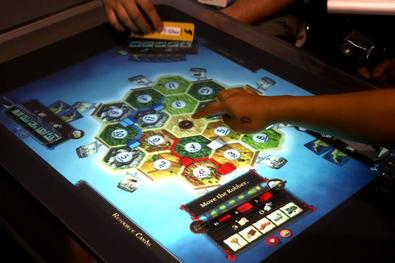 Folks who’ve read my work over the years know I play a lot of games, but I’ve also done a fair bit of design work as well. I’ve worked with third-party publishers for popular games, and I’ve written for independent clients whose projects are all over the spectrum in terms of genre and mechanics. If you’re thinking of making your own game, then let me give you some quick advice on avoiding a few of the most common traps I’ve seen folks fall into. Tip #1: The Fewer Steps, The Better All tabletop RPGs have some variety of conflict resolution system. It might be dice, cards, a Jenga tower, rock-paper-scissors, but there is always some system in place to determine whether character actions succeed or fail when there is a challenge. And there are usually bonuses and negatives that you have to add in to modify your character’s chance of success. I say this from the bottom of my heart: do not make players go through multiple steps to resolve something. Adding complication slows down the game, and makes a lot of players less likely to enjoy your system. Give you an example. In your classic Dungeons and Dragons or Pathfinder game you add up all your character bonuses first, so they are a single, static number (this step can even be done before game start, saving a huge amount of time). You roll your die, then add that number. You compare the result to the target you have to hit. In the midst of a tense situation, such as swinging a sword, moving into position for a stealthy ambush, etc., a player does a single addition problem, and the result is generated. Boom, bam, done, move the story along. A lot of designers, though, think that adding multiple steps to resolve a single action is a good idea. They give you multiple charts to roll on to find out what part of the body a blow landed on, for example, or they make you roll under a target number, and then divide by five to find out how many successes you got on that action. Sometimes they turn every action into a roll-off between the player and an NPC, which means you now have two people doing two separate equations to figure out if an action succeeded or failed. Sometimes this is done in the name of realism, and sometimes it’s just to be different, but it is never a good idea. It’s like making someone fill out multiple forms at the checkout before they can buy that thing they want in your online store; you want actions resolved quickly, before your customer decides they’re better served elsewhere. Tip #2: Addition is Better Than Subtraction For most people, addition is easier than subtraction. Not only is it easier, though, it’s more satisfying. You will always get more engagement from players who are adding up bonuses to reach a higher target number, than you will players applying negatives and trying to squeak by a lower threshold. Look at your game’s primary kind of math. If you’re asking players to do quick addition, then it’s going to be easier to learn, and more players are going to be able to get into the swing. If you’re asking players to subtract (or worse, divide), then you may quickly find yourself talking to the backs of potential players’ heads as they walk away. Tip #3: Do Not Bury Your Lead If you want your game to get noticed, then you need to offer your players a unique experience that’s unlike anything else they can get on the market. If your game allows players to be cyborg minotaurs fighting Viking sky pirates riding ice drakes, you should not only tell potential players that, but it should be your goddamn cover art! A game will live or die based on what makes it different from its competition, since most players already have a shelf full of games. So what does your game have that all those other games don’t? Is it a totally unique fantasy setting that foregoes the usual Tolkien-esque elements? Is it a d12-based system that you can learn in less than an hour? Or is it a sci-fantasy game that embraces Afro futurism or Arab futurism rather than more traditional, Western genre visions? Don’t hide that! These are the elements that will get people to pay attention to your game, but so often designers push those things to the background so that someone can easily miss them if they don’t read to page 194 in the core rule book. Tip #4: Don’t Be Different Just To Be Different I talked about this in my post Fantasy Writers, If You’re Just Changing Something’s Name, Don’t Bother, but I feel this needs to be reiterated for all the game designers out there; there is nothing wrong with using the terms, ideas, and tropes that gamers are familiar with in your product. If you have orcs, that’s fine. If you have light elves and dark elves, more power to you. If your dwarves are known as miners and smiths, and your gnomes tend to make unstable inventions, that’s okay. These tropes will give players an immediate sense of familiarity, so using them is not some kind of cardinal sin you need to seek penance for. On the other hand, if you just go through a setting with a thesaurus and change everything’s name, players aren’t going to thank you for that. Especially if your short, burly, bearded miners know for the quality of their smithing are called Urshines for no reason other than you didn’t want to have stereotypical dwarves in your game (despite making them exactly that, with a different name). The same is true when it comes to mechanics. If you’re using an Open Gaming License to make your system, don’t tweak and change stuff just to be different; all you’re going to do is frustrate and annoy players who now have to recall all the fiddly little differences if they don’t make a wide-ranging impact on how conflicts are resolved. If you’re making changes, make those changes noticeable, memorable, and give them an impact in your game beyond making players remember a dozen pages of new terminology. #5: Have An Overall Vision To be clear, here, I’m never near the top of the chain of command when it comes to designing game settings and mechanics. I’m a merc, usually hired on to write setting fluff, or to contribute X number of powers, spells, feats, or what have you. Normally I like to think I’m pretty good at this job, however, if you’re not going to do everything in a game yourself, you need to have an overall vision to communicate to all the folks helping you build this game. And even if you are making the whole thing by your one-some, you should still be able to communicate your vision for setting and overall mechanical structure to people you would like to buy and play your game once you finish it. An elevator pitch can make the difference between being forgettable to your public (or requesting mountains of edits from your work-for-hire team), and smooth sailing all the way to your publication date. For more gaming advice from Neal Litherland, check out his Gamers archive, or visit his blog Improved Initiative. Alternatively, take a look at his Amazon Author Page if you’d like to check out his books! Picture Reference: https://www.tested.com/tech/3275-dd-of-the-future-why-virtual-tabletop-gaming-is-going-to-be-awesome-video/ 19/12/2018 08:44:34 am
Nice post. I learn something more challenging on different blogs everyday. It will always be stimulating to read content from other writers and practice a little something from their store. I?d prefer to use some with the content on my blog whether you don?t mind. Natually I?ll give you a link on your web blog. Thanks for sharing.
Reply
Leave a Reply. |
All blog materials created and developed by the staff here at High Level Games Archives
April 2023
Categories
All
|
Proudly powered by Weebly



 RSS Feed
RSS Feed